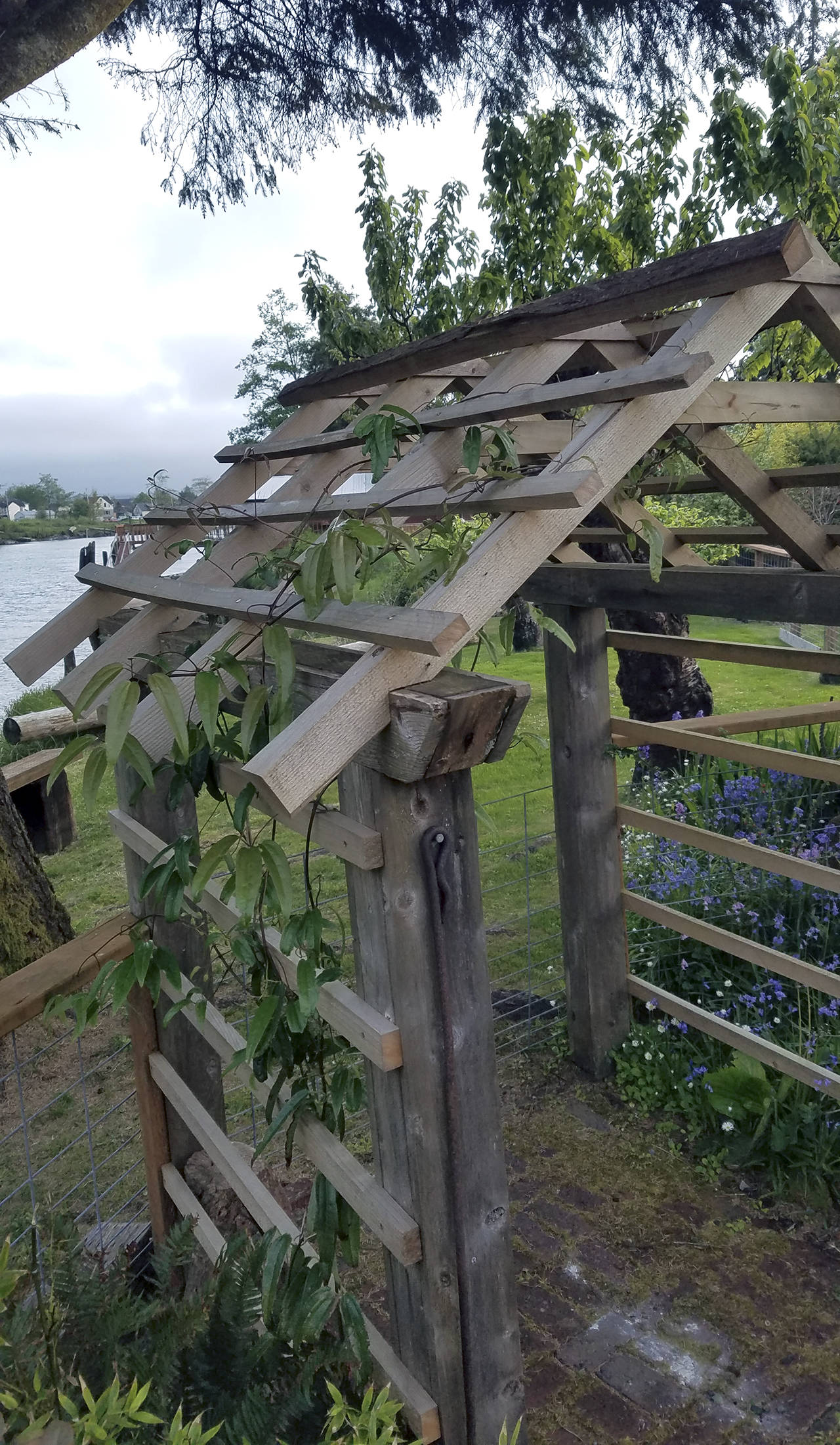I’m a lazy gardener. Plants have to be hardy if they’re going to make it in my plot of paradise on the Wishkah.
“But,” you say, “you’re a Master Gardener, so you should know what you’re doing to make your plants thrive!”
It’s true that there are some truly amazing MGs (my shorthand which should not be confused with the spunky little British roadster) who possess vast vaults of knowledge and experience to keep even the most cantankerous cultivar growing contentedly for decades. But I’m not one of them. If it requires much “fussing,” it won’t make it in my yard.
And so it was a revelation, and a humbling experience, two summers ago when I discovered a spindly, hidden, utterly neglected evergreen clematis growing slowly along the riverbank, overshadowed by a powerful sword fern and dominated by a clumping bamboo bush from above.
A mere foot beyond the struggling little perennial was the remnant of an unfinished arbor: a four-posted structure that had once possessed a peaked roof covered on top and sides by lattice. The roof and lattice had long ago been removed, victims of weather and time. But the 4×4 posts were still strong, and I had plans for resurrecting the structure into something more House and Garden magazine-worthy. But that was over 10 years ago and, well, life had other projects that needed tending outside of the garden.
Our little clematis had been patiently lying in wait for over a decade for us to rediscover him and to lift him up again. I was guilt-stricken, so I did what any regretful parent would do: I strung him up to the top crosspiece of the unfinished arbor and tied him securely with a piece of twine. I may be lazy, but I’m not heartless. Miraculously, he started to throw out new tendrils in an effort to become self-sufficient and strong.
Being the indolent landscaper that I am, it took me another year to tackle the design and construction of the roof of our arbor. It had to be built skookum, yet graceful. My clever and handy husband fabricated strong and beautiful rafters from cedar boards that we had had planed in 2012 after a small logging operation on our property. Determining how to make the angled cuts took us back to our high school trigonometry days and had us YouTubing how to achieve sine and cosine angles. We were a little giddy in putting the project together and, once again, marveled at the information available at one’s Googling fingertips.
Our engineering and carpentry accomplishment has made our indomitable Clematis armandii very happy. His (or maybe I should refer to plants with feminine pronouns — after all, they are part of Mother Nature) delicate tendrils are anxiously securing themselves to the rails and rafters of our structure in an effort to make up for lost time, and I have promised never to forget her again.
What I have concluded in my experience is that the evergreen clematis is an incredibly resilient and beautiful addition to the garden. It’s also very fragrant. Unlike her powerful cousin, wisteria (Fabaceae), the clematis is more manageable and won’t destroy the structure to which it’s secured. The vine is hardy to cold temperatures and tolerant of dry summers.
Although I only refer to the evergreen variety here, there are vast arrays of deciduous varieties, which lose their leaves during the winter only to reward you with spectacular color in the spring and summer. Some will bloom into fall.
The important thing to remember is that they yearn to grow skyward and/or outward and, therefore, require a fence, lattice frame or other structure to wrap their delicate yet strong shoots around. They’ll also require periodic trimming to keep growth in check.
Take it from a lazy MG: The evergreen clematis is a forgiving, low-maintenance addition to any garden — and one that will reward you many seasons over if you just show it a little respect and lift her off the ground.
* * *
See you at the Grays Harbor Home and Garden Show next weekend, May 18-19. So many plants for you to buy! New this year: fresh flower bouquets!
Lori Berken, WSU Master Gardener class of 2016, lives on the Wishkah River. Her garden was featured on an MG garden tour a few years ago.


